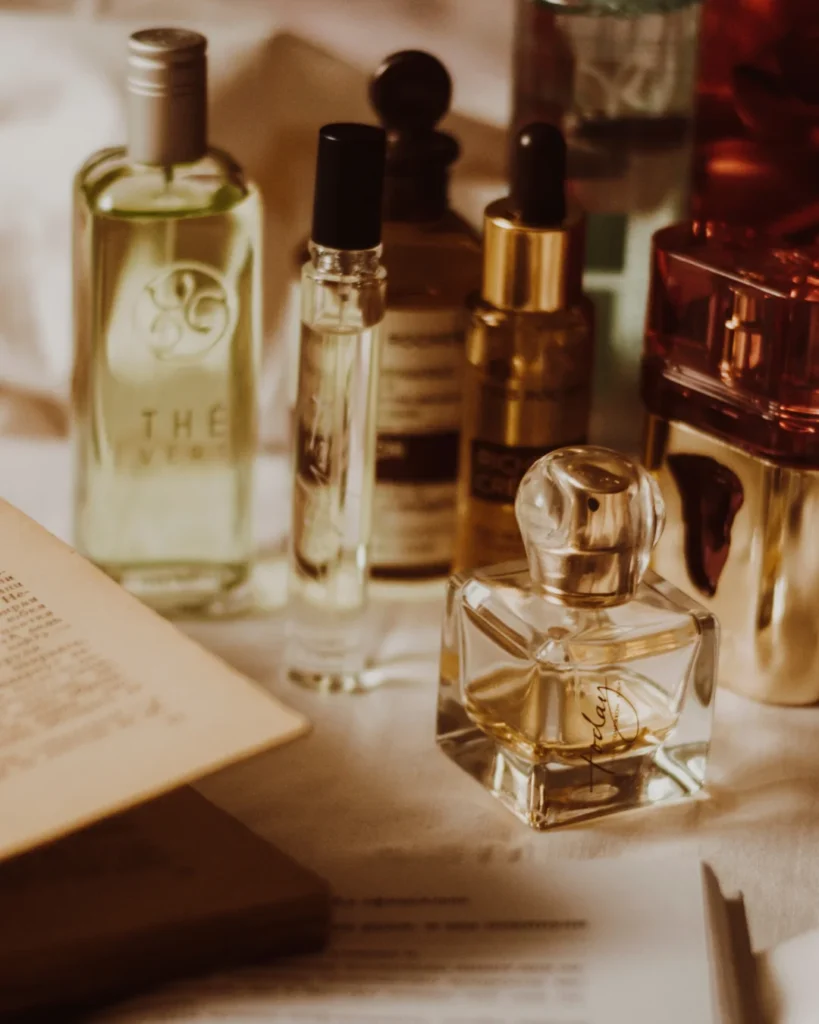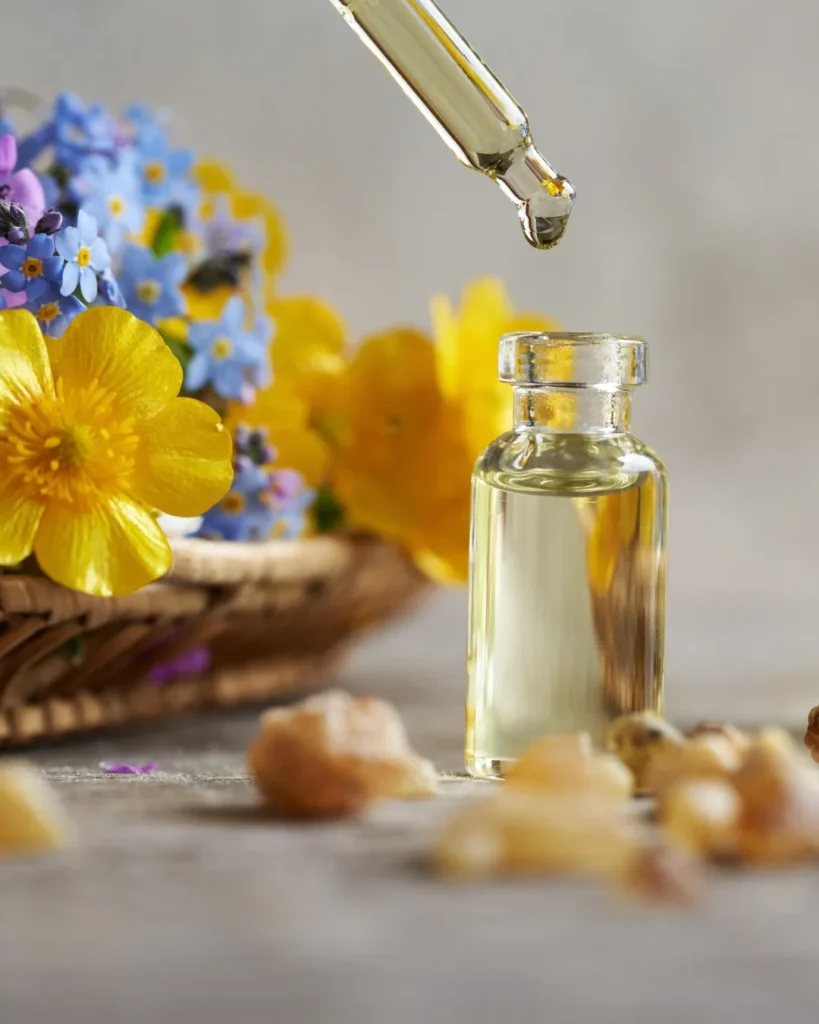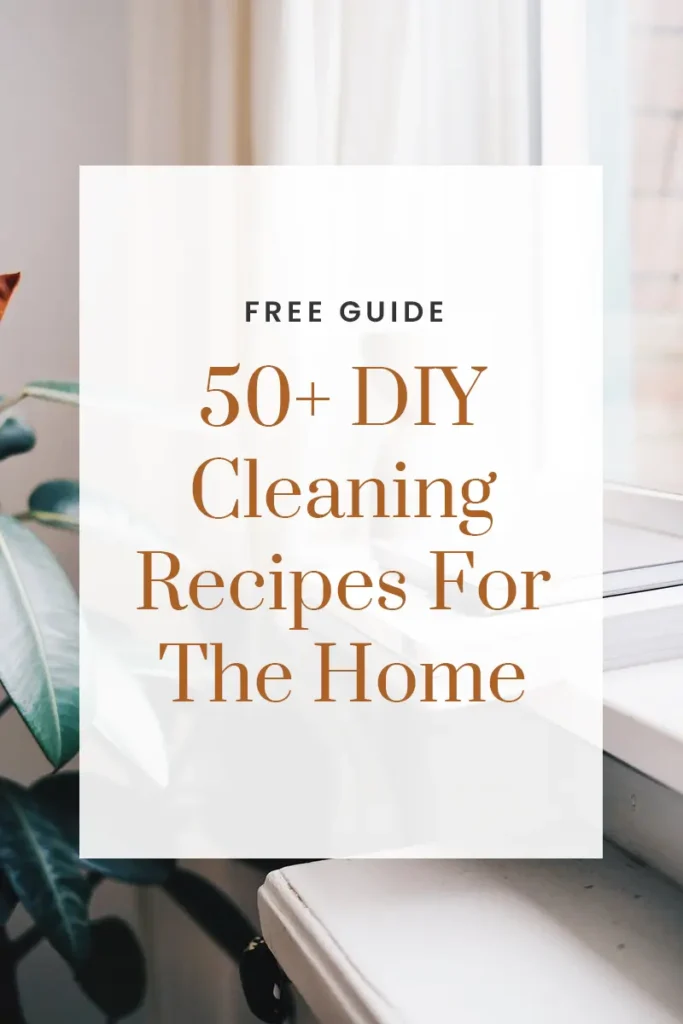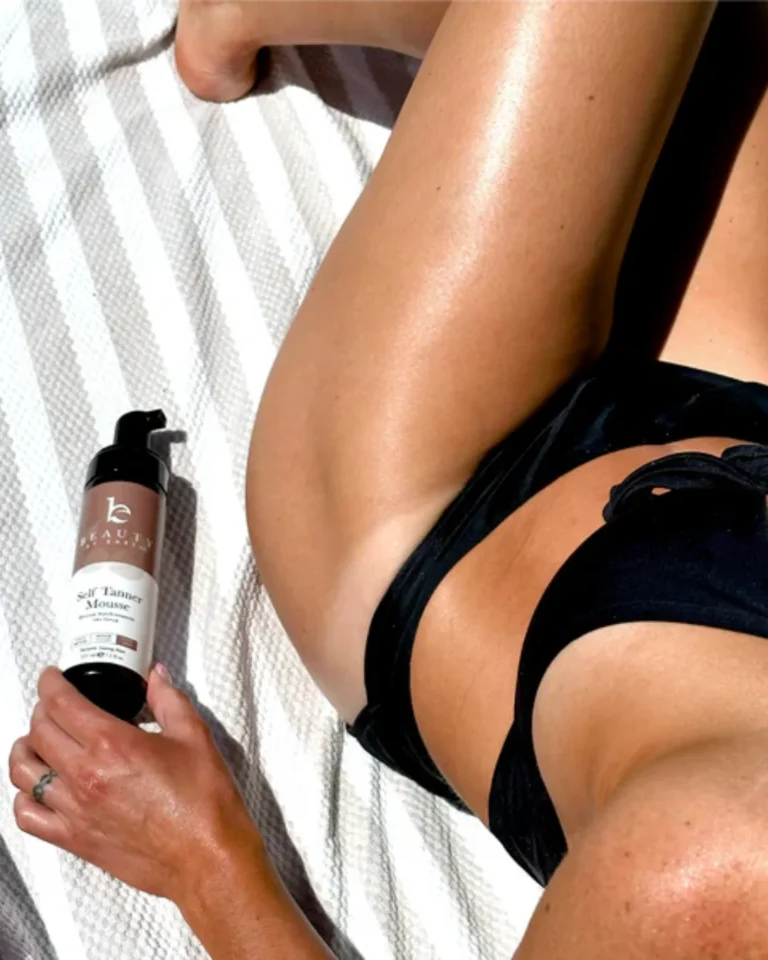SKL is reader supported. When you buy through links on our site, we may earn affiliate commission. Learn more here.
You know how you can catch a whiff of a product and immediately feel transported to a field of wildflowers or a tropical beach? There’s a not-so-little secret hiding in those scents that we need to talk about. It’s called the fragrance loophole and it’s pretty serious.
What is the fragrance loophole? How does it benefit companies? Which synthetic fragrance dangers should be on your radar? All valid questions and we got the answers for you!
This guide will help you understand exactly what’s behind those sweet-smelling bottles, and help you make informed, healthy decisions.
You might also want to check the most toxic perfume list below and the fragrance side effects to make sure that you’re not spritzing any of these top-selling products on your skin.
P.S. Check out the 11 best non-toxic & natural perfume brands in 2024 for truly safe options.

Understanding the Fragrance Loophole & Why It Matters
You stroll down the aisles of your favorite store, surrounded by shelves stacked high with beauty and personal care products. Each one promises to whisk you away with its heavenly scent – from calming lavender to zesty citrus and everything in between.
But have you ever wondered what exactly gives these products their signature fragrances?
Cue the fragrance loophole, the sneaky trick that keeps us guessing about what’s really in that bottle of lotion or shampoo.
Synthetic fragrances can contain up to 3,000 different chemicals. These chemicals are often undisclosed on product labels. Shockingly, that’s actually legal!
How is this possible I hear you ask. Believe it or not, the regulations governing cosmetics and personal care products don’t require companies to disclose every single ingredient in their fragrances.
Companies argue that the specific blend of scents in their products is a trade secret. So, they are allowed to keep their fragrance formulas confidential to maintain a competitive edge in the market.
While this secrecy protects companies’ intellectual property, it also leaves consumers in the dark about exactly what they’re putting on their skin or inhaling.
What is the Fragrance Loophole?
Simply put, the fragrance loophole is a sneaky little gap in regulations that allows companies to bundle a bunch of different chemicals under the single, innocent-sounding term “fragrance” or “parfum.”
This means when you see “fragrance” listed on the back of your shampoo bottle or body lotion, it could be hiding dozens, if not hundreds, of chemicals that aren’t disclosed to you.
Think of it as the “etcetera” of ingredient lists – convenient for companies, but not so great for transparency.
How Did This Loophole Come to Be?
Now, how did we end up with this fragrant mystery? The story goes back to the 1960s when regulations around cosmetics and personal care products were getting a much-needed overhaul.
Back then, the idea was to protect trade secrets. After all, no one wants their signature scent copied, right? So, the “fragrance” label was introduced as a way to keep these proprietary blends under wraps.
Fast forward to today, and while trade secrets are still a thing, the world has woken up to the fact that not all hidden ingredients are harmless. Despite growing awareness and pushback, the fragrance loophole has managed to stick around like a stubborn perfume on laundry day.
What Are the Cosmetic Labeling Requirements?
If you’ve ever felt like you need a PhD to decipher the back of your favorite shampoo bottle, you’re not alone.
In the United States, the FDA (that’s the Food and Drug Administration sets the rules for cosmetic labeling.
Here’s the scoop on what’s legally required to appear on those labels:
- Product Identity: This is the basic “what is it” info. It should tell you if you’re holding a moisturizer, shampoo, or that miracle wrinkle cream you’ve been dying to try. Usually, you’ll find this on the front of the packaging.
- Net Contents: How much product are you actually getting? This should be listed in both metric (grams or milliliters) and US customary units (ounces). It’s usually on the front, near the bottom.
- Ingredient List: Here’s where it gets juicy. All ingredients must be listed in descending order of predominance. This means the ingredient that makes up the largest part of the product comes first, and the one with the smallest amount is last. However, ingredients that make up less than 1% can be listed in any order after the main ingredients.
- Manufacturer Information: The label must include the name and address of the manufacturer, packer, or distributor. If you need to track someone down to ask why their product made your skin break out, this is where you look.
- Warnings and Instructions: Any necessary warnings (like “avoid contact with eyes” or “not for internal use”) must be clearly stated. Instructions for safe use should also be included.
What’s Not Required?
Now, here’s where things get a bit sneaky:
- Fragrance Ingredients: As we’ve discussed, “fragrance” or “parfum” can hide a cocktail of undisclosed chemicals. Companies aren’t required to list every individual component of their fragrance blends, thanks to trade secret protections.
- Exact Ingredient Percentages: While ingredients must be listed in order of predominance, the exact percentages aren’t required. So, you might see “aloe vera” high up on the list and assume there’s a lot in there, but the reality could be quite different.
- Expiration Dates: Unlike food, cosmetics aren’t required to have an expiration date on the label. However, some products will voluntarily include this to help you know when it’s time to toss them.
Common Products Using the Fragrance Loophole
Perfumes and Colognes: This one’s a no-brainer. These products are all about the scent, and they’re the OG users of the fragrance loophole.
Shampoos and Conditioners: Next time you’re lathering up, remember that delightful scent might be a cocktail of undisclosed chemicals. You can check out our recommendations for the best zero-waste shampoo & conditioner in 2024.
Lotions and Creams: Moisturizing with a hint of mystery – sounds exciting, right? Except when you consider what might be in that “hint.” For safer alternatives, read our non-toxic body lotion brand guide.
Cleaning Products: Yup, even your laundry detergent and dish soap might be hiding something behind that fresh, clean scent. We shared some fantastic non-toxic options for floor cleaners, detergents, and odor removers earlier this year.
Air Fresheners: Whether it’s a spray, plug-in, or a scented candle, these products often use the fragrance loophole to create their signature scents. Here are some of the safest non-toxic air fresheners for your home & car.
The Most Toxic Chemicals in “Fragrance” or “Parfum”
Phthalates
Phthalates are often used in fragrances to help scents last longer. These chemicals, however, have been linked to a host of health issues.
Studies have shown that phthalates can disrupt the endocrine system, interfering with hormone production and potentially leading to reproductive issues such as reduced fertility in both men and women.
Additionally, research has linked prenatal exposure to phthalates with developmental problems in children, including lower IQ and issues with motor skills and behavior.
Parabens
Parabens, another group of chemicals commonly found in fragrances, are used primarily as preservatives.
While they help extend the shelf life of products, parabens can also mimic estrogen in the body, disrupting hormonal balance. This disruption has been associated with an increased risk of breast cancer and reproductive toxicity.
Studies have detected parabens in human breast tissue, suggesting that these chemicals can accumulate in the body over time, raising concerns about their long-term health effects.
Synthetic Musks
Synthetic musks are chemicals used to create long-lasting scents in products. While they might keep you smelling fresh all day, synthetic musks can accumulate in human tissue and the environment.
Some experts have raised concerns about the potential for these compounds to disrupt hormone function and contribute to endocrine system disorders.
Additionally, synthetic musks have been found in breast milk, raising concerns about their potential impact on infants.
Benzene Derivatives
Benzene derivatives are often found in synthetic fragrances and are known for their pleasant smells.
However, benzene is a well-documented carcinogen, and exposure to benzene derivatives has been linked to an increased risk of leukemia and other blood disorders.
The International Agency for Research on Cancer (IARC) classifies benzene as a Group 1 carcinogen, indicating that there is sufficient evidence of its carcinogenicity in humans.
Aldehydes
Aldehydes are another common ingredient in synthetic fragrances, used for their distinctive scents.
However, aldehydes can be irritating to the skin, eyes, and respiratory system. Long-term exposure to certain aldehydes, such as formaldehyde, has been linked to cancer, particularly nasopharyngeal cancer and leukemia.
Formaldehyde is also a known allergen and can cause skin irritation and allergic reactions in sensitive individuals.
The Most Serious Fragrance Side Effects
If you’ve ever spritzed on your favorite perfume, only to find yourself sneezing and rubbing your eyes within minutes, then you’ve already experienced the first side effect of allergic reactions.
That’s the short-term impact of some of these hidden fragrance chemicals. You might experience allergic reactions, which could turn your skin red and itchy, or give you a rash or hives.
Breathing in these synthetic fragrances can lead to headaches, dizziness, and coughing fits – not exactly the fresh feeling you were hoping for! If you have asthma, these scents can be a nightmare, making it even harder to catch your breath.
Plus, direct contact with these ingredients might cause your skin to throw a tantrum in the form of contact dermatitis, leaving you with inflamed, itchy skin.
Now, let’s talk about the long-term effects of cozying up to these chemical cocktails. Over time, chemicals like phthalates and parabens can mess with your hormones, leading to all sorts of troubles like reproductive issues and even certain cancers.
Chronic exposure to synthetic fragrances can also take a toll on your lungs, potentially leading to conditions like asthma and bronchitis.
The worst part? These chemicals can accumulate in your body, raising the risk of neurological disorders and other serious health problems.
Perfume Poisoning
Scary, I know! Perfume poisoning occurs when your body reacts negatively to the chemicals found in fragrances.
These reactions can range from mild irritations to severe health issues, depending on the type and amount of chemicals you’re exposed to.
Given that many perfumes contain a mix of potentially harmful ingredients like phthalates, synthetic musks, and aldehydes, it’s no wonder that some people might experience adverse effects.
Perfume poisoning can happen in several ways:
- Inhalation: Breathing in the chemicals from a fragrance can irritate your respiratory system. This is especially problematic in poorly ventilated areas or if you’re using a heavy hand when applying perfume.
- Skin Contact: Direct contact with your skin can lead to absorption of the chemicals, which can cause local reactions like rashes and hives or even systemic reactions if the chemicals enter your bloodstream.
- Accidental Ingestion: While not common, accidental ingestion can happen, especially in households with young children who might mistake a sweet-smelling bottle for something edible.
The Most Toxic Perfumes List
Britney Spears Fantasy: Don’t let the pop princess allure fool you. Britney Spears Fantasy might smell like sweet, sweet candy, but it’s packed with synthetic musks and phthalates. Studies have shown that these chemicals can mess with your hormones and even cause reproductive issues. So, while you might feel like you’re living a fantasy, your body is dealing with a nightmare.
Chanel No. 5: Chanel No. 5 is iconic, but behind its timeless scent lies a cocktail of potential toxins. This classic fragrance contains aldehydes and other chemicals that can irritate your skin and respiratory system. Long-term exposure has been linked to serious health issues, including cancer. Sometimes, luxury comes at a higher price than expected.
Calvin Klein’s Eternity: Calvin Klein’s Eternity promises everlasting romance, but it also delivers a dose of synthetic musks and parabens. These ingredients have been linked to hormone disruption and can accumulate in your body over time. Not exactly the eternal love story you were hoping for, right?
Dior’s Poison: With a name like Poison, you’d think it’s a warning! Dior’s Poison might be a bold choice for a night out, but it’s also packed with phthalates and synthetic fragrances. These chemicals can lead to allergic reactions, respiratory issues, and more. A little too on the nose, don’t you think?
Victoria’s Secret Bombshell: Victoria’s Secret Bombshell is designed to make you feel sexy and confident. However, it’s loaded with synthetic fragrances that can cause headaches, dizziness, and skin irritation. Not to mention the potential long-term health risks like hormone disruption and reproductive toxicity. Maybe it’s time to break up with this bombshell.
Bath & Body Works Japanese Cherry Blossom: Bath & Body Works Japanese Cherry Blossom might smell like a serene walk through a garden, but it’s hiding some dirty secrets. This popular fragrance contains a mix of synthetic musks and phthalates. These can lead to skin irritation, respiratory problems, and even hormone disruption. So much for a peaceful, natural vibe!
Axe Body Spray: Axe Body Spray is a favorite among teenagers, but it’s also a chemical cocktail. Loaded with synthetic fragrances and phthalates, it can cause allergic reactions, asthma flare-ups, and other respiratory issues. Plus, the potential long-term effects on hormone levels are no joke. Time to axe this one from your shopping list!
Tom Ford Black Orchid: Tom Ford’s Black Orchid is the epitome of seduction, but its ingredient list is far from appealing. This fragrance contains a variety of synthetic compounds that can cause skin irritation and respiratory issues. Long-term exposure to these chemicals has been linked to more serious health concerns, including hormone disruption and cancer.
How Does The Fragrance Loophole Benefit Companies?
It Saves Money
Everything comes down to dollars and cents. Creating fragrances can be an expensive business, especially if you’re aiming for the high-quality, all-natural route.
But here’s where the fragrance loophole throws companies a bone. By allowing them to use cheaper, synthetic chemicals without disclosing them, companies can significantly cut costs.
These synthetic ingredients are produced in bulk and at a fraction of the cost of their natural counterparts. Plus, they have a longer shelf life, meaning products stay fresher for longer, reducing waste and returns.
Essentially, the fragrance loophole lets companies keep their costs low and their profits high – a win-win for their bottom line, but maybe not so much for your health.
It’s Good For Marketing
Think about it. Companies can create a signature scent that sets your product apart from the competition, without having to spill the beans on what’s inside. Sounds pretty sweet, right?
When they label their scents as simply “fragrance” or “parfum,” companies can craft unique, memorable scents that consumers love, without giving away their secret recipes.
They can freely experiment with different chemical combinations to achieve the perfect scent, all while keeping competitors in the dark. It’s like having a secret sauce that you never have to reveal.
Legal Protection
Last but certainly not least, let’s talk about legal protection. In 2024, consumers are increasingly concerned about what’s in their products, the fragrance loophole acts like a legal shield for companies.
When companies use the term “fragrance,” they can avoid listing potentially harmful chemicals individually, thereby reducing the risk of lawsuits and regulatory scrutiny.
If a health issue arises that can be traced back to a specific chemical in their product, the company can argue that they were within legal bounds, as they followed the regulations set forth for fragrance disclosure.
This loophole also means that companies don’t have to constantly update their labels with every tweak to their scent formulas, saving them time and legal headaches.
Essentially, the fragrance loophole acts as a get-out-of-jail-free card, allowing companies to sidestep accountability while staying within the letter of the law.
What Can Consumers Do About The Fragrance Loophole?
First up, when buying new products, have a look at the Environmental Working Group (EWG).
Their Skin Deep Database is a treasure trove where you can look up the safety ratings of thousands of beauty and personal care products.
They advocate for stronger regulations, more transparency in labeling, and safer ingredients across the board.
Next, we’ve got the Campaign for Safe Cosmetics which thrives on holding companies accountable.
They work tirelessly to push for stricter regulations on harmful chemicals in cosmetics, including those sneaky ingredients hiding behind the “fragrance” label.
Their campaigns raise awareness about the health risks associated with certain chemicals and push for safer alternatives.
They’re the voice calling for change, and they’re not backing down until everyone can feel confident about the products they use.
Understand Cosmetic Labeling
When you’re shopping, don’t just toss a product into your cart because it smells like a tropical paradise. Flip that bad boy over and check the ingredients.
- Avoid Products with “Fragrance” or “Parfum”: If you see these terms on the label, it’s a red flag. Remember, these are catch-all terms that can hide a multitude of chemicals.
- Look for Full Ingredient Disclosure: Some brands are committed to transparency and will list all their fragrance ingredients. Look for products that proudly display their ingredient list without hiding behind vague terms.
- Seek Out Certifications: Certifications like “USDA Organic,” “ECOCERT,” or “Made Safe” indicate that the product meets certain safety and environmental standards. These certifications can give you peace of mind that you’re making a safer choice.
- Research Unfamiliar Ingredients: If you come across an ingredient you don’t recognize, do a quick search. Resources like the Environmental Working Group’s (EWG) Skin Deep database can help you understand what’s in your products and their potential risks.
Choose Truly Natural and Non-toxic Products
Go for Natural and Organic Brands: Brands that focus on natural and organic ingredients are often a safer bet. Look for products that highlight natural essential oils for fragrance instead of synthetic compounds. We’ve listed some great natural soaps, makeup brands, body washes, and hair oils in previous guides.
Read Reviews and Do Your Homework: Before buying a new product, read reviews from other consumers who are also focused on safer choices. Blogs, forums, and even social media groups dedicated to clean living can be treasure troves of information.
Simplify Your Routine: Sometimes less is more. Reduce the number of fragranced products you use daily. This not only minimizes your exposure to potentially harmful chemicals but also simplifies your beauty and hygiene routine.
Check for Allergens and Sensitivities: Even natural ingredients can cause allergic reactions in some people. Always check for potential allergens and do a patch test with new products to ensure they’re safe for you.
Simple Recipes for Making Your Own Fragrances at Home

DIY Perfume Spray:
Ingredients:
- 1 tablespoon vodka or witch hazel
- 1 tablespoon distilled water
- 10-15 drops of your favorite essential oils (lavender, rose, and citrus blends are great starting points)
- A small spray bottle
Instructions:
- Combine the vodka or witch hazel and distilled water in the spray bottle.
- Add the essential oils. You can mix and match to create your perfect scent.
- Shake well before each use. Spray onto pulse points like your wrists and neck for a natural, chemical-free fragrance.
Homemade Scented Lotion
Ingredients:
- 1/2 cup shea butter
- 1/4 cup coconut oil
- 1/4 cup almond oil
- 10-15 drops of essential oils (try lavender for relaxation or peppermint for a refreshing kick)
Instructions:
- Melt the shea butter and coconut oil in a double boiler.
- Remove from heat and stir in the almond oil and essential oils.
- Let the mixture cool until it starts to solidify, then whip it with a hand mixer until it’s fluffy.
- Transfer to a jar and enjoy your homemade, nourishing scented lotion.
This post was about the fragrance loophole and why it matters
Simply put, while the fragrance loophole serves to protect companies’ innovation and market position, it also raises important questions about consumer safety and the right to know what’s in the products we use daily.
Understanding what’s in your products and making informed choices can help you avoid these synthetic fragrance dangers and live a healthier life.
Now that you know the most dangerous fragrance side effects and exactly what’s hiding behind the mysterious “fragrance” and “parfum” labels, make sure to choose products that are certified safe and natural.
 Enter To Win An Organic Luxury Mattress From PlushBeds!
Enter To Win An Organic Luxury Mattress From PlushBeds! 







